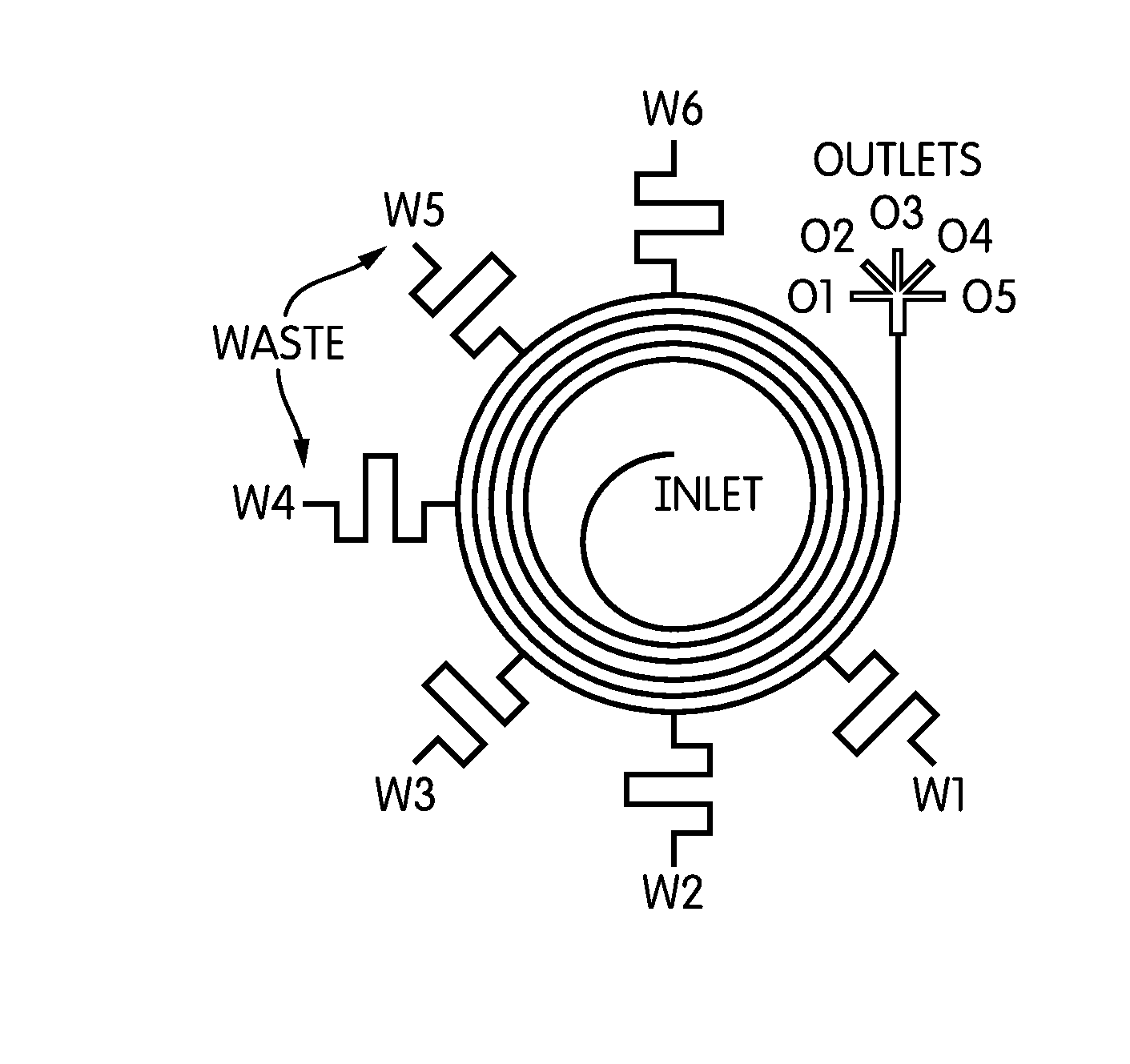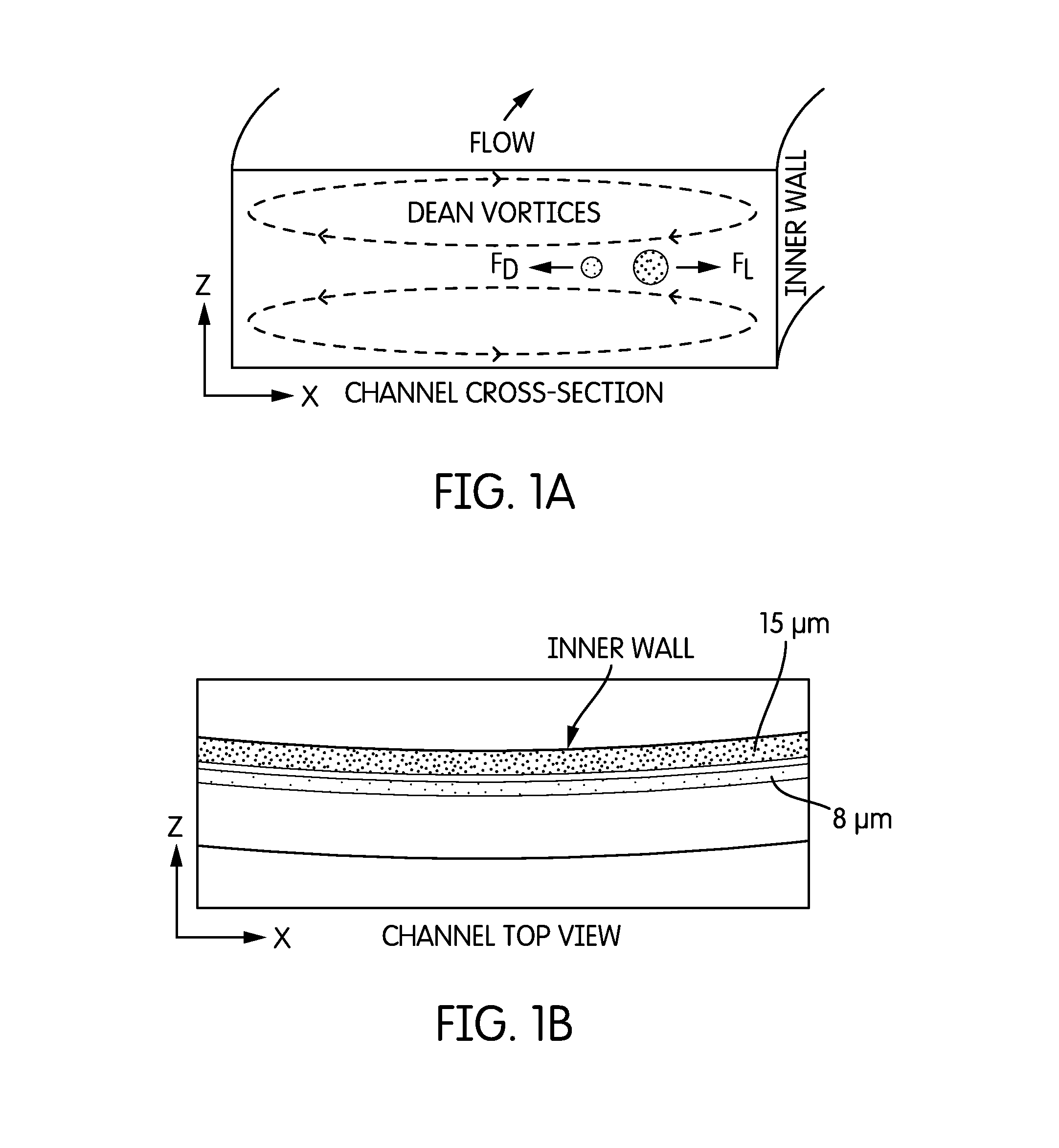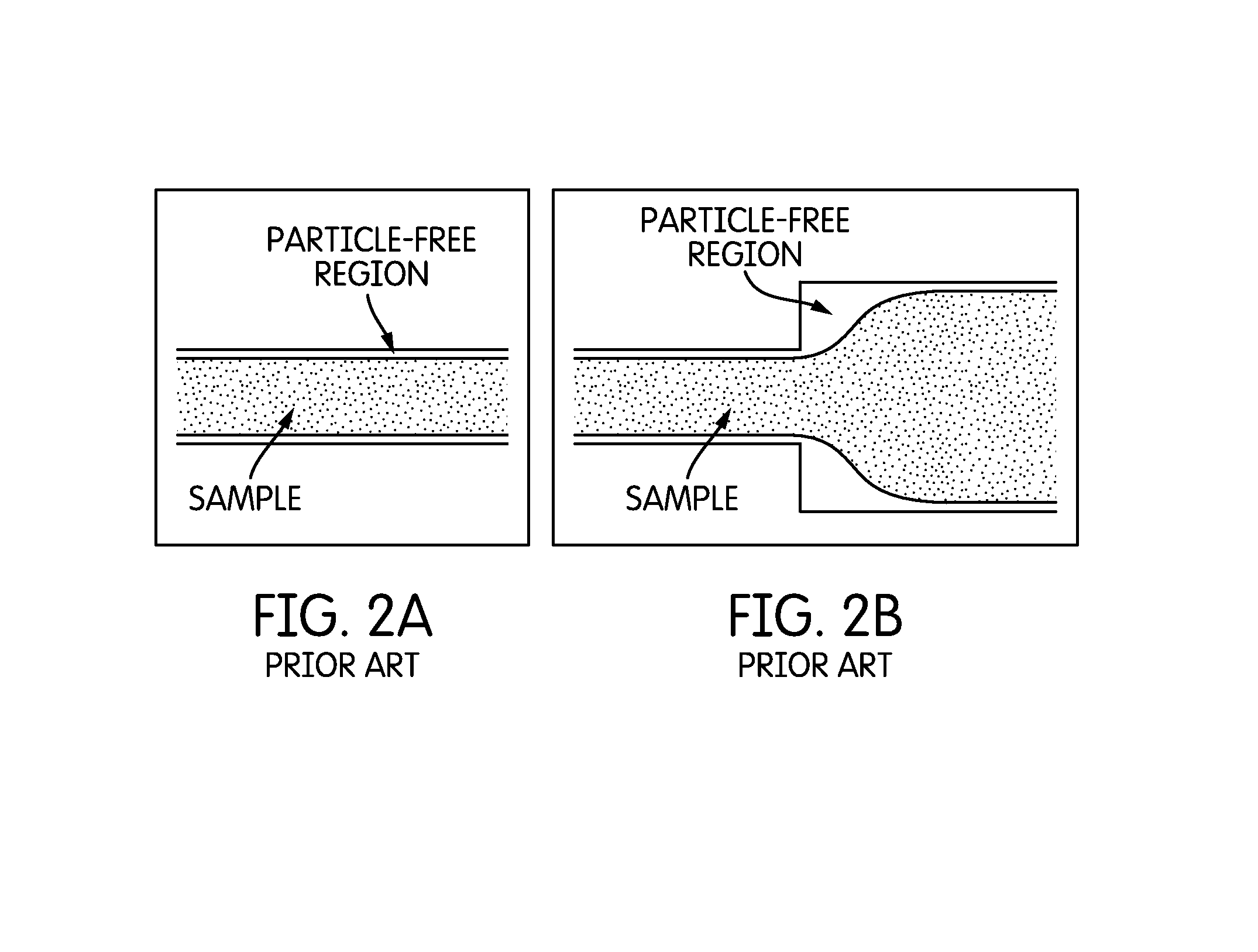Particle separation and concentration using spiral inertial filtration
a technology of spiral inertial filtration and particle separation, which is applied in the field of microfluidics, can solve the problems of poor separation resolution, inability to process large sample volumes, and inability to recover rare cells, and achieve the effect of increasing the particle concentration
- Summary
- Abstract
- Description
- Claims
- Application Information
AI Technical Summary
Benefits of technology
Problems solved by technology
Method used
Image
Examples
example 1
Device Fabrication
[0132]To evaluate the design methodology, a series of SIFT microfluidic devices with a single waste channel (at the W2 position in FIG. 4) were fabricated. These devices consisted of a 7-loop Archimedean spiral (inner radius of 0.5 cm) with a single inlet, a waste channel, and a bifurcating outlet. In this non-limiting example, the spiral channel was 250 μm×50 μm (w×h) and had a 250 μm gap between successive loops. The evaluation design chosen is not intended to be limiting. The invention may be implemented with main channel configurations having fewer than or more than seven loops or configurations other than an Archimedean spiral of the stated dimensions. The widths of the waste channels were set between 40 and 250 μm to remove a certain fraction of fluid: e.g., 5, 10, 20, or 50%. As discussed below, the flow removed by a waste channel depends on its fluidic resistance, which is proportional to the channel length divided by its width. The soft lithography techniq...
example 2
Fluid Removal Quantification
[0138]To determine the amount of fluid removed by the waste channels, deionized water was pumped into the devices at particular flow rates using a syringe pump (New Era Pump Systems, Inc.). To ensure that the flow rate had stabilized, each rate was held for 5 minutes. Fluid was then collected from the waste channels and the outlets for 5 min and the fluid was weighed to determine the volume collected. This was repeated three times for each flow rate for a single device.
example 3
Particle Focusing
[0139]FIG. 7 represents images of 15 μm particles focused in SIFT devices containing a single waste channel designed for 5% (i and ii), 20% (iii and iv), and 50% (v and vi) fluid removal at two flow rates (100 μL / min and 1250 μL / min) The flow rates selected for experiment and verification are not intended to be limiting. Flow rates different from 100 μL / min or 1250 μL / min may be used and higher flow rates, e.g., up to 3 mL / min. may be employed. FIG. 7 showed that one can design for specific fluid removal rates; however, it is important to determine the impact of the fluid removal on the concentration and position of focused particle streams. Fluorescent particles 15 μm in diameter (14% coefficient of variation (CV)) (ThermoFisher Scientific) dispersed in deionized water at a concentration of 0.003% by weight were injected at increasing flow rates into the spiral inertial filtration devices containing a single waste channel of varying width using the syringe pump. Im...
PUM
| Property | Measurement | Unit |
|---|---|---|
| particles sizes | aaaaa | aaaaa |
| flow rate | aaaaa | aaaaa |
| flow rate | aaaaa | aaaaa |
Abstract
Description
Claims
Application Information
 Login to View More
Login to View More - R&D
- Intellectual Property
- Life Sciences
- Materials
- Tech Scout
- Unparalleled Data Quality
- Higher Quality Content
- 60% Fewer Hallucinations
Browse by: Latest US Patents, China's latest patents, Technical Efficacy Thesaurus, Application Domain, Technology Topic, Popular Technical Reports.
© 2025 PatSnap. All rights reserved.Legal|Privacy policy|Modern Slavery Act Transparency Statement|Sitemap|About US| Contact US: help@patsnap.com



